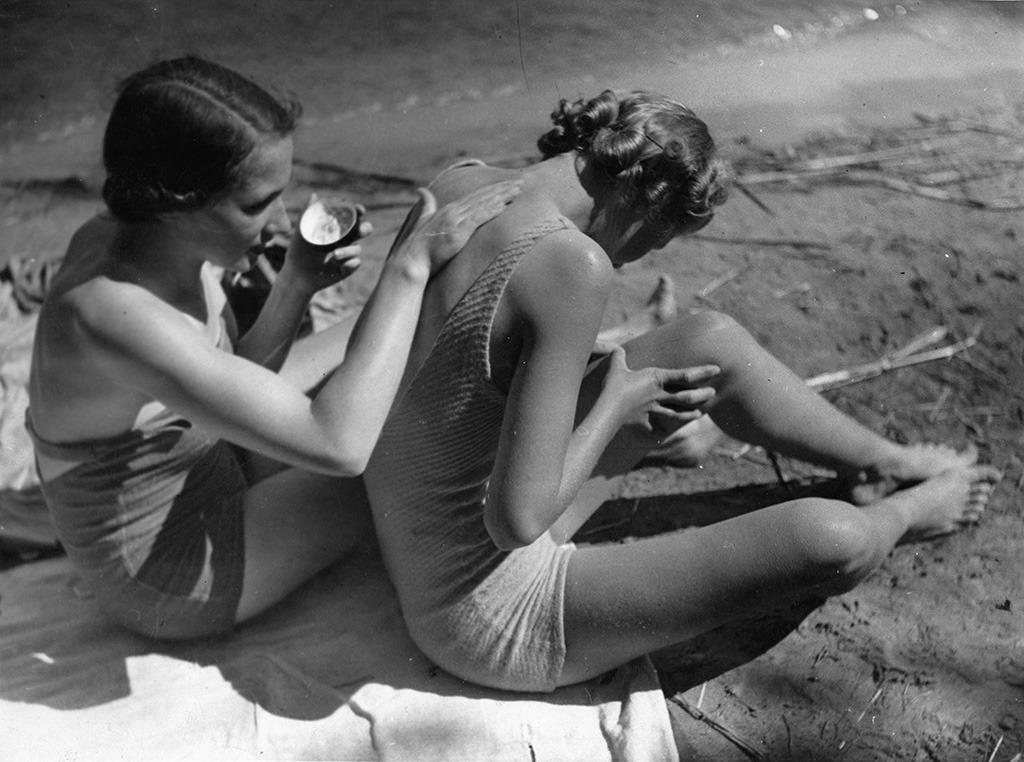All Sunscreens Are Not Created Equal: Check This Guide Before You Step Outside

Don’t slather just anything onto your precious skin. (Photo: Getty Images)
The sunscreen market has become undeniably complex over the last few decades, with a seemingly endless supply of creams, sprays, and lotions vying for a spot on your skin — and a veritable alphabet of active ingredients, from avobenzone to zinc, claiming to do the best job of blocking out cancer-causing rays. Luckily, the Environmental Working Group has released its 10th annual Guide to Sunscreens, rating hundreds of the market’s options for safety and efficacy — and BS factor — just in time for the unofficial start of summer.
First, the good news: EWG has deemed a whopping 203 beach and sport sunscreens as best on the market, plus 22 stellar options in the “for kids” category. They range from high-priced mineral-based creams — Badger, Blue Lizard, Beautycounter — to more affordable (and findable) drugstore brands, such as Aveeno and Yes to Cucumbers. (The worst picks for kids, meanwhile, come from brands such as Banana Boat, Coppertone, CVS, and Neutrogena. See the full “worst” list here.)
Also good: EWG declares sunscreen regulations are moving in the right direction. Since 2011, labels must now include warnings about skin cancer and aging, and cannot make misleading claims such as “waterproof” or “sunblock” (as opposed to “sunscreen”). A couple of years ago, Pres. Obama signed the 2014 Sunscreen Innovation Act, which created a better FDA process for reviewing and approving new ingredients. And since 2007, EWG has found a dramatic increase in the availability of mineral-only sunscreens, doubling from 17 percent of products to 34 percent in 2016.
But the bad news also abounds. Sonya Lunder, EWG senior analyst, tells Yahoo Beauty that many of this year’s findings were worrisome. “The bottom line message is that the FDA sets weak rules for skin protection from sunscreen, and as a result,” she says, “we see worrying marketing trends and products that are overpromising.”
The biggest problems, according to EWG’s 2016 report, which analyzed more than 750 beach and sport sunscreens, are that nearly three quarters of the products provide inferior sun protection or contain potentially dangerous active ingredients — such as worst-offenders oxybenzone, a known hormone disruptor, or retinyl palminate, a form of vitamin A that’s potentially harmful to skin.
“Those chemicals are the two we are most consistently concerned with,” Lunder notes. “They go right alongside our concerns about high SPFs — which are used incorrectly — and sprays.”
The problem with high SPFs, she explains, is how misleading those numbers can be: High-SPF products tempt people to apply too little sunscreen and stay in the sun for too long. And while the FDA has proposed prohibiting the sale of sunscreens with SPF values greater than 50, it has not issued a regulation. Meanwhile, the number of products touting an SPF of 70 or higher has skyrocketed in the past few years.
Sunscreen sprays, too, are increasingly popular. In 2007, less than 20 percent of the sunscreens EWG reviewed were sprays; this year, nearly 30 percent were. But EWG worries that these products pose an inhalation risk and may not provide an even enough coating on skin — and in 2011, the FDA raised similar concerns, threatening to ban sprays until manufacturers could provide data about their safety and worth.
Consumers should also choose wisely when it comes to moisturizers that contain SPF protection, Lunder urges. “They tend to break down and are not as strong [as regular sunscreens] to begin with, so applying them once a day is not enough unless you’re working inside,” she says. “Otherwise they only last about two hours. So this idea of ‘daily-wear’ sunscreen” can be questionable.
And then there are the chemicals. Oxybenzone and retinyl palminate may be the most worrisome, but they’re not the only problems: Octinoxate and homosalate are linked to hormone disruption, while octisalate and avobenzone have links to skin allergies. Even the health impacts of mineral-based products, which contain nanoparticles of zinc oxide and titanium dioxide, are not fully known. Still, EWG considers them to be the best options out there today because they do not penetrate the skin.
Finally, EWG’s report found that many products inaccurately claim to prevent skin cancer, despite the fact that most scientist and health agencies, including the FDA, have not conclusively found that sunscreen can prevent most types of skin cancer. Still, the consensus among researchers is that the most important step people can take to reduce their risk of melanoma — a deadly type of skin cancer that’s on the rise — is to avoid sunburn. And to not rely on sunscreens alone, but to bring hats, clothing and other forms of shade into the mix.
See the full list of 203 EWG-approved beach and sport sunscreens here, guide to the 98 best SPF-containing moisturizers here, and the 22 best children’s sunscreens here. You can also download their mobile app guide to have the lists with you while you shop, here.
Let’s keep in touch! Follow Yahoo Beauty on Facebook, Twitter, Instagram, and Pinterest.




